Abstract
Two experiments determined the effects of early color experience on gradients of wavelength generalization. In each experiment, one group of ducklings was raised in monochromatic (589 nanometers) sodium-vapor light and a second group, in white light. In Exp. I, ducklings pecked a key transilluminated by 589 nanometers. In a subsequent test, the group raised in white light produced steeper gradients. However, several monochromatically reared ducklings produced gradients as steep as those for the white-reared ducklings. In Exp. II, ducklings pecked a white line. In a subsequent test, using a fully illuminated key, subjects in both groups responded more often to “green” (510, 530, 550, or 570 nanometers) than to “non-green” wavelengths (490, 589, 610, or 650 nanometers). Ducklings raised in monochromatic light preferred shorter “green” wavelengths than ducklings raised in white light. This difference between the “green” preferences for the two groups accounted for most of the differences between the gradients of wavelength generalization obtained from the two groups in Exp. I after training at 589 nanometers.
Full text
PDF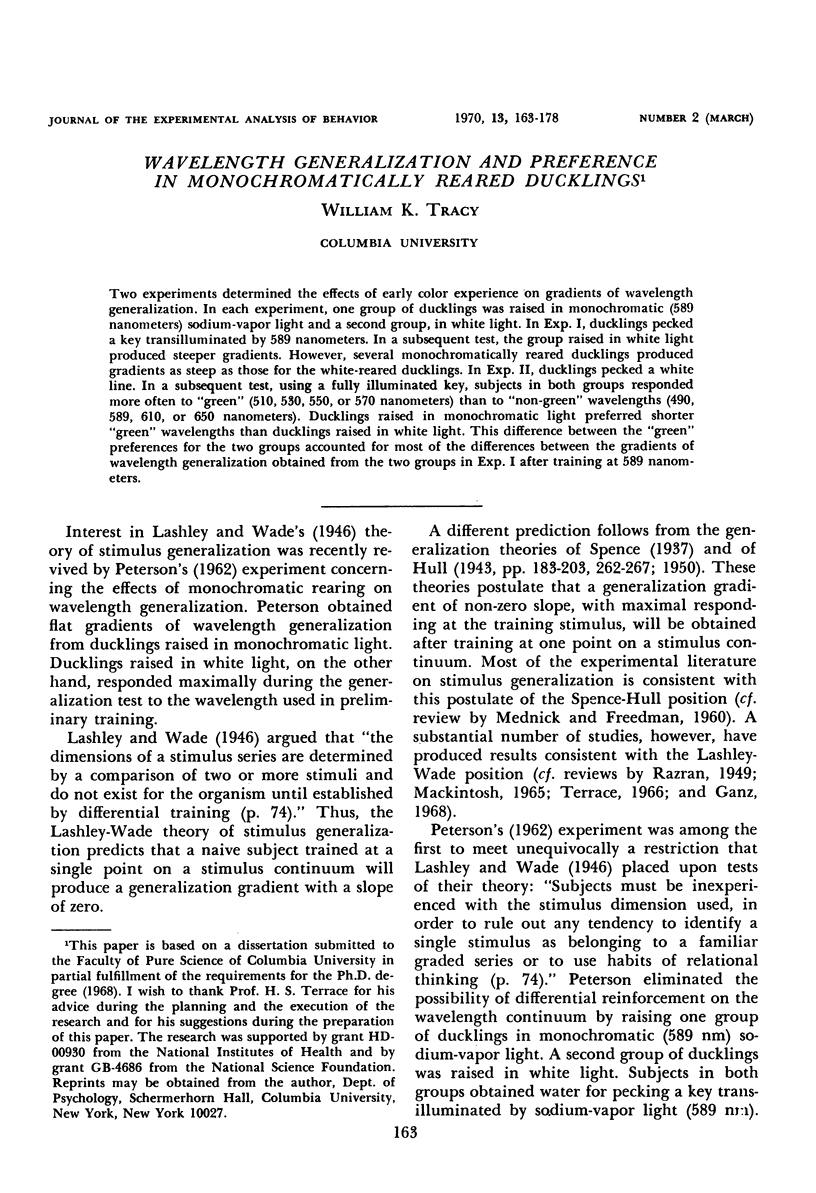
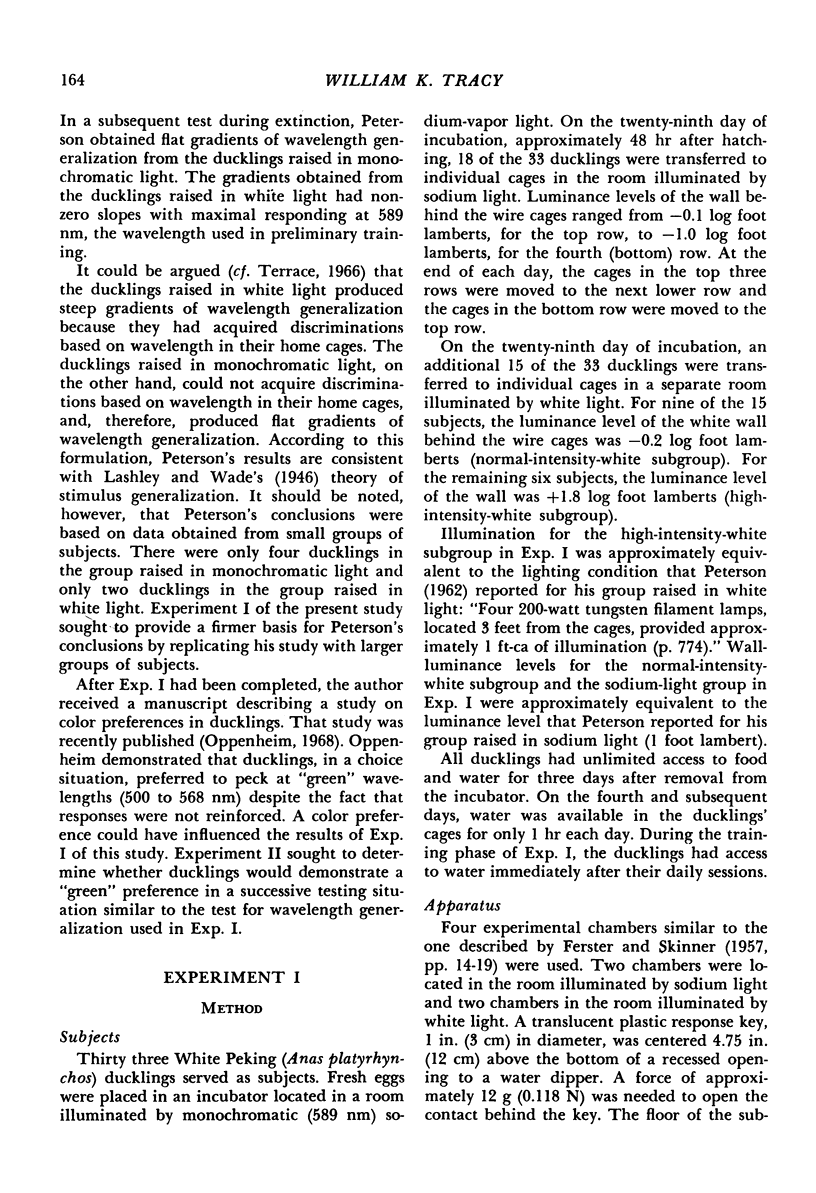
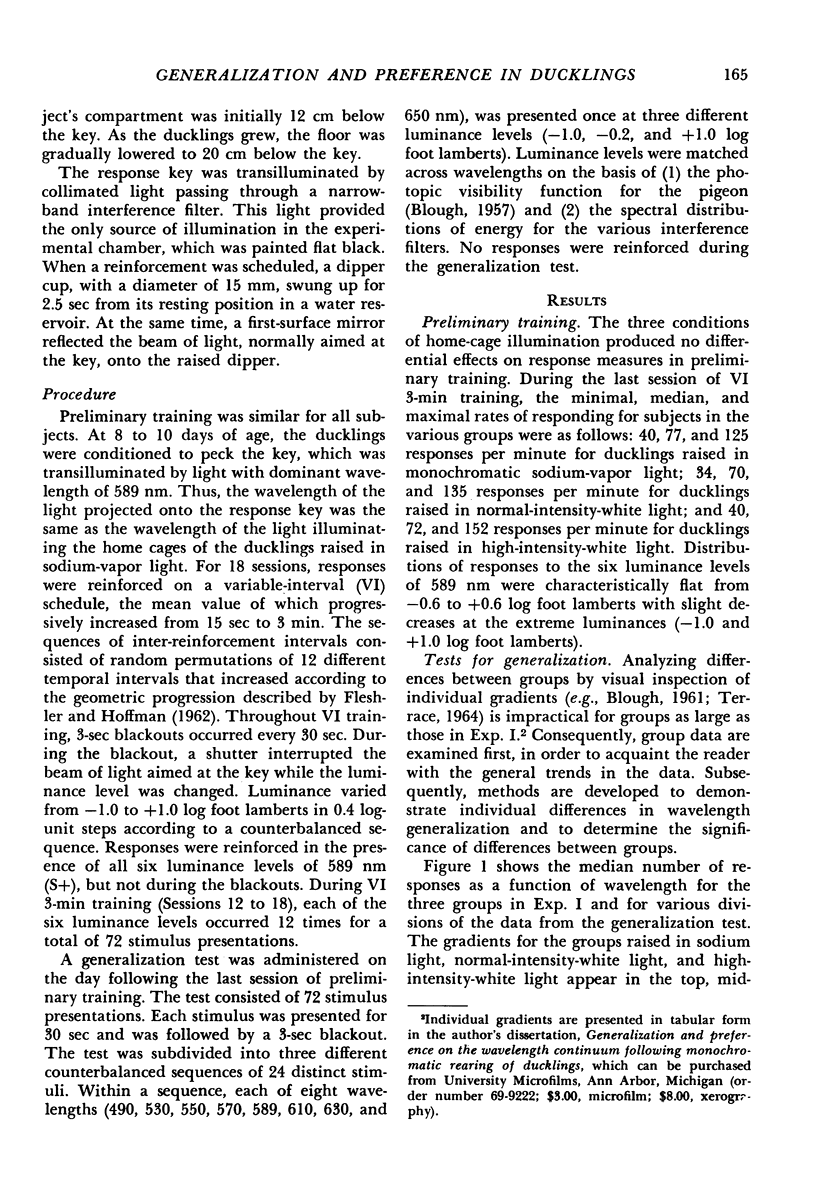
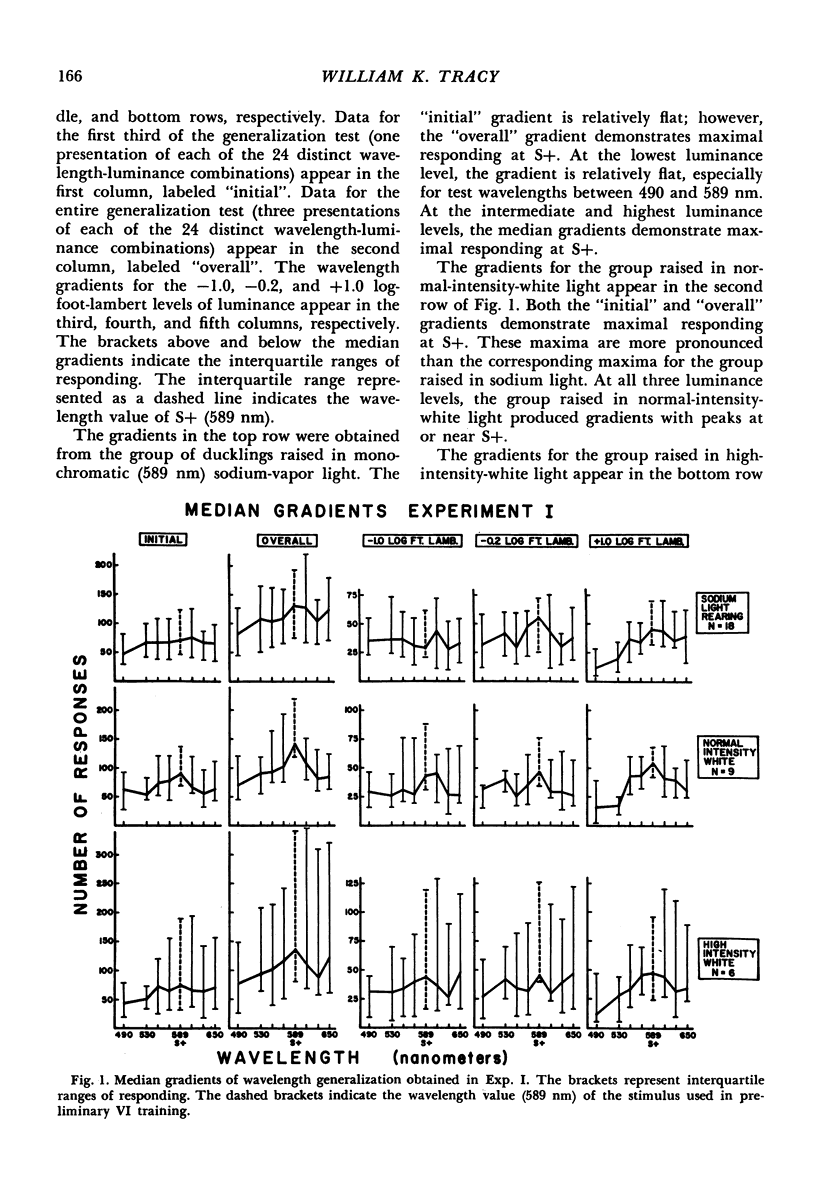
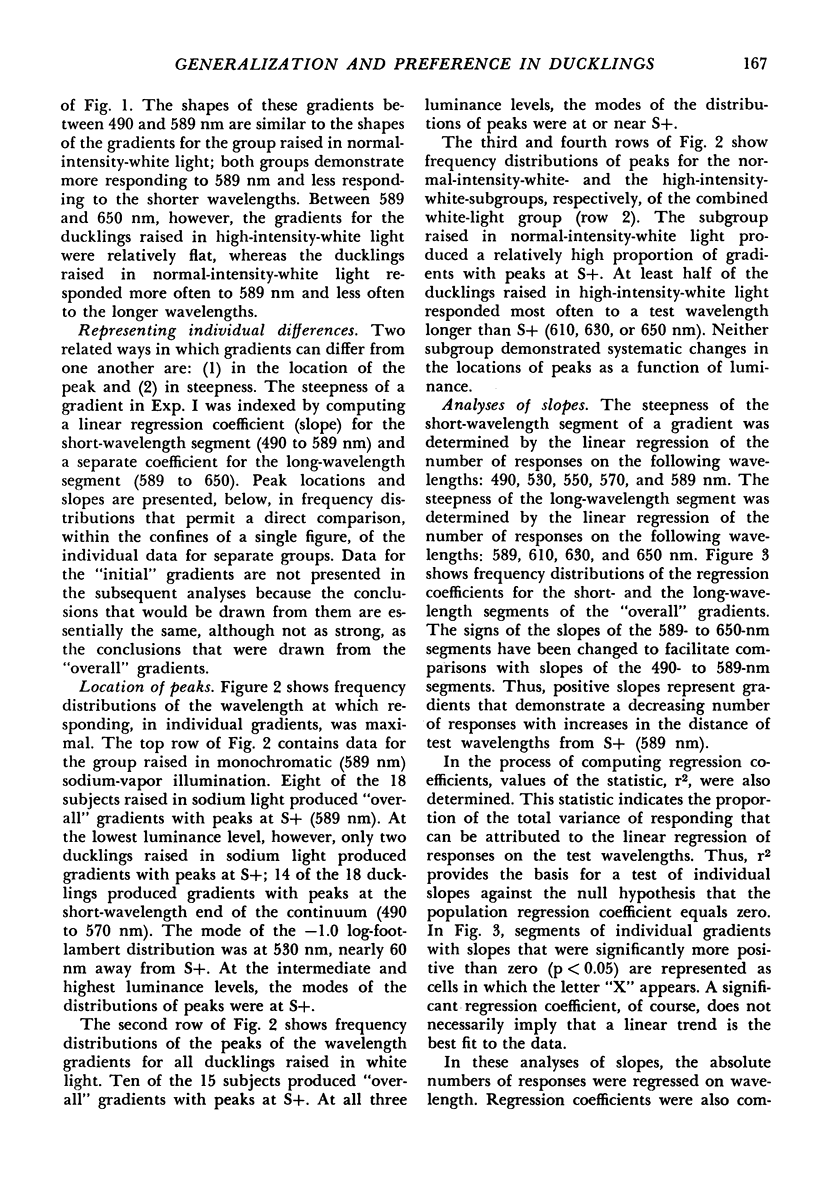
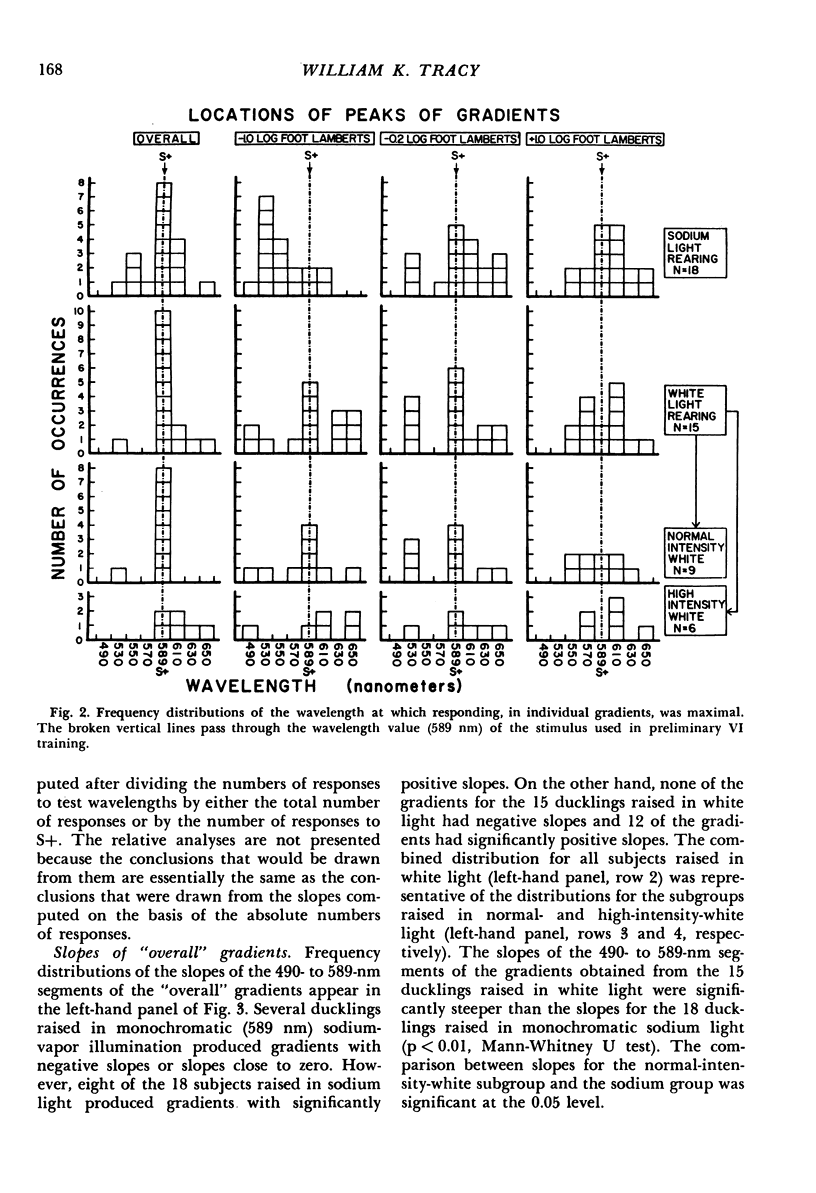
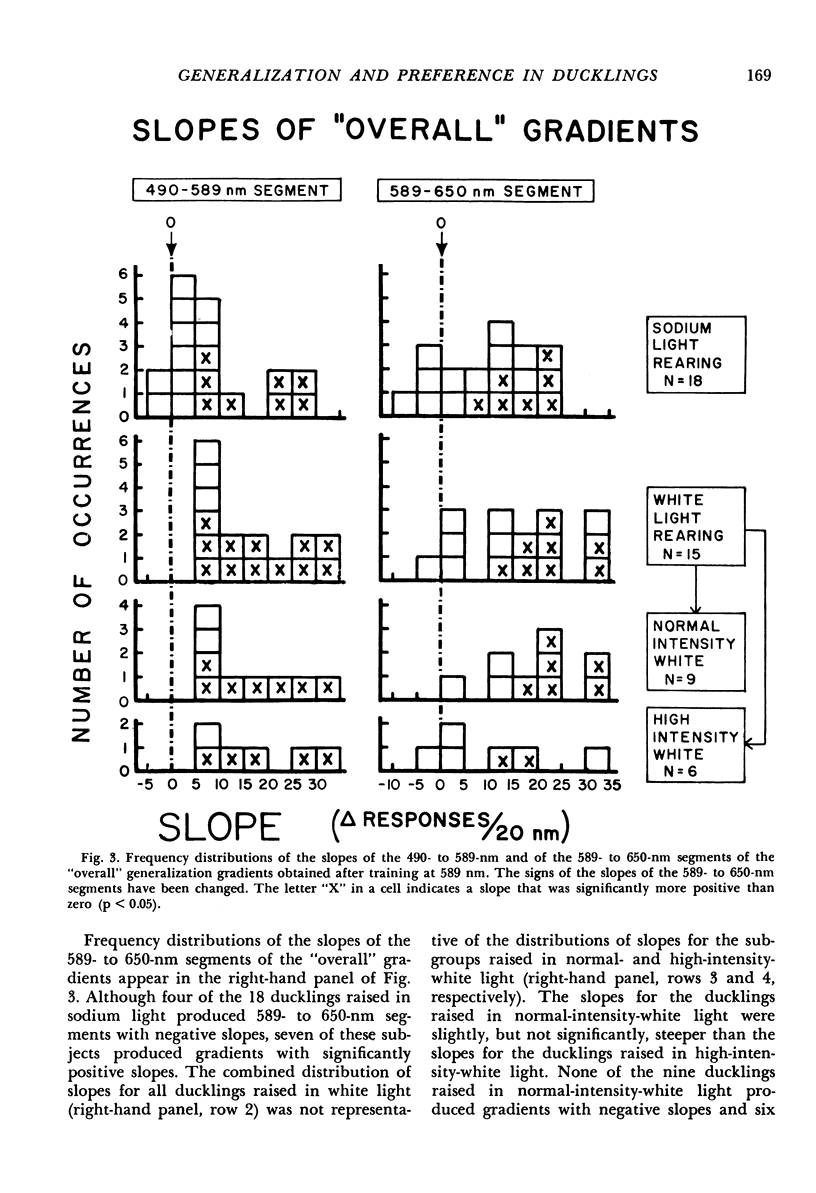
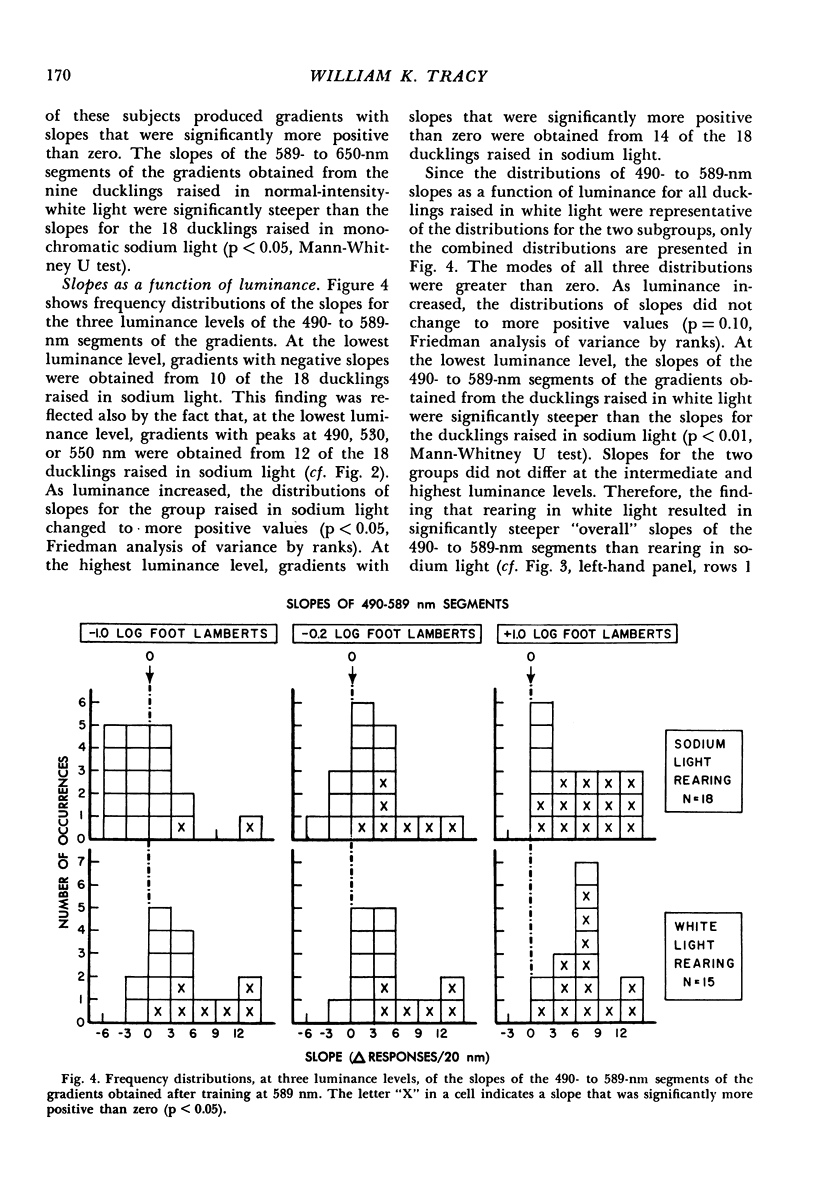
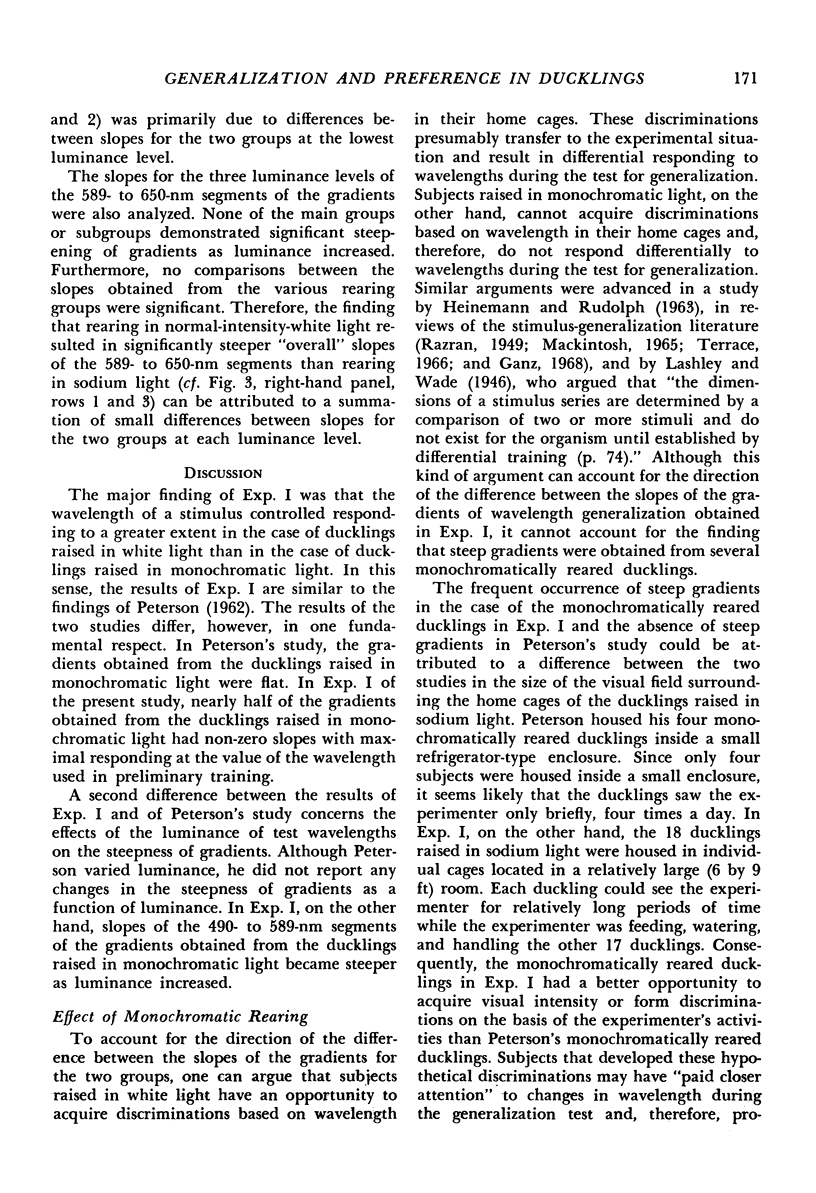
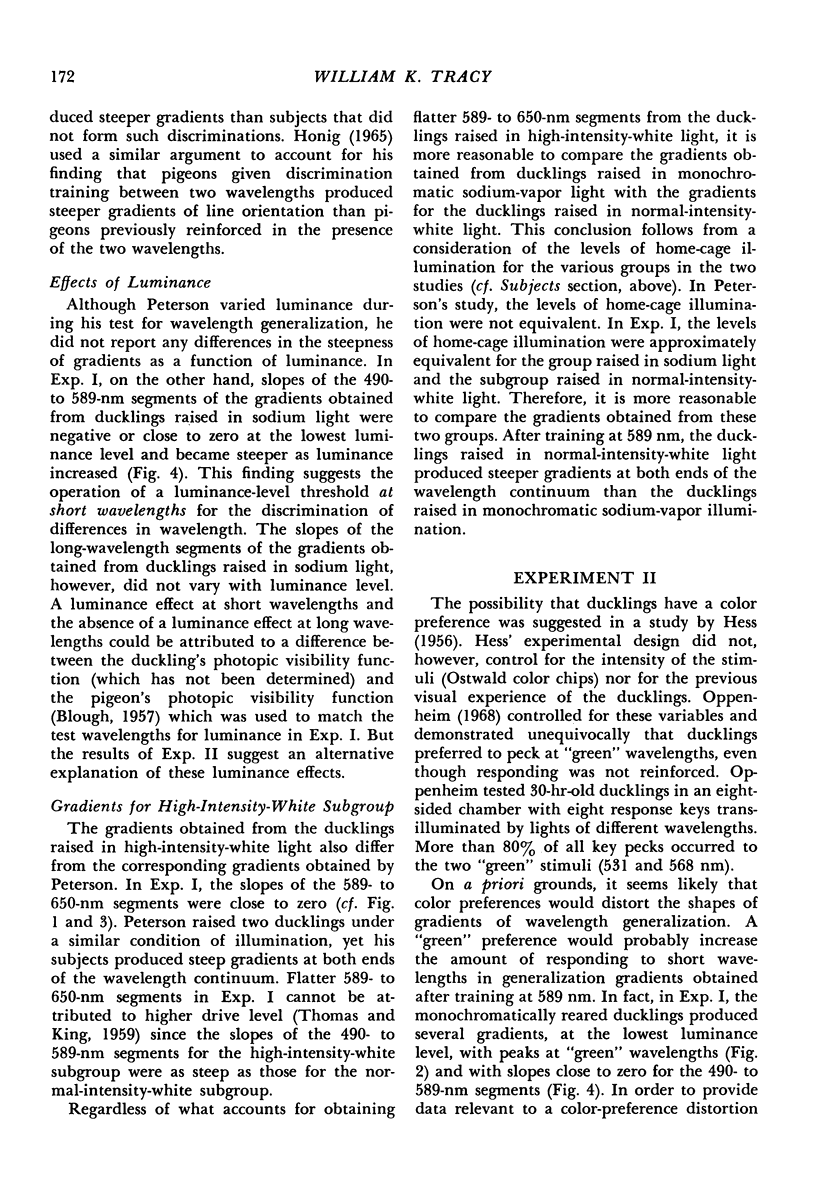
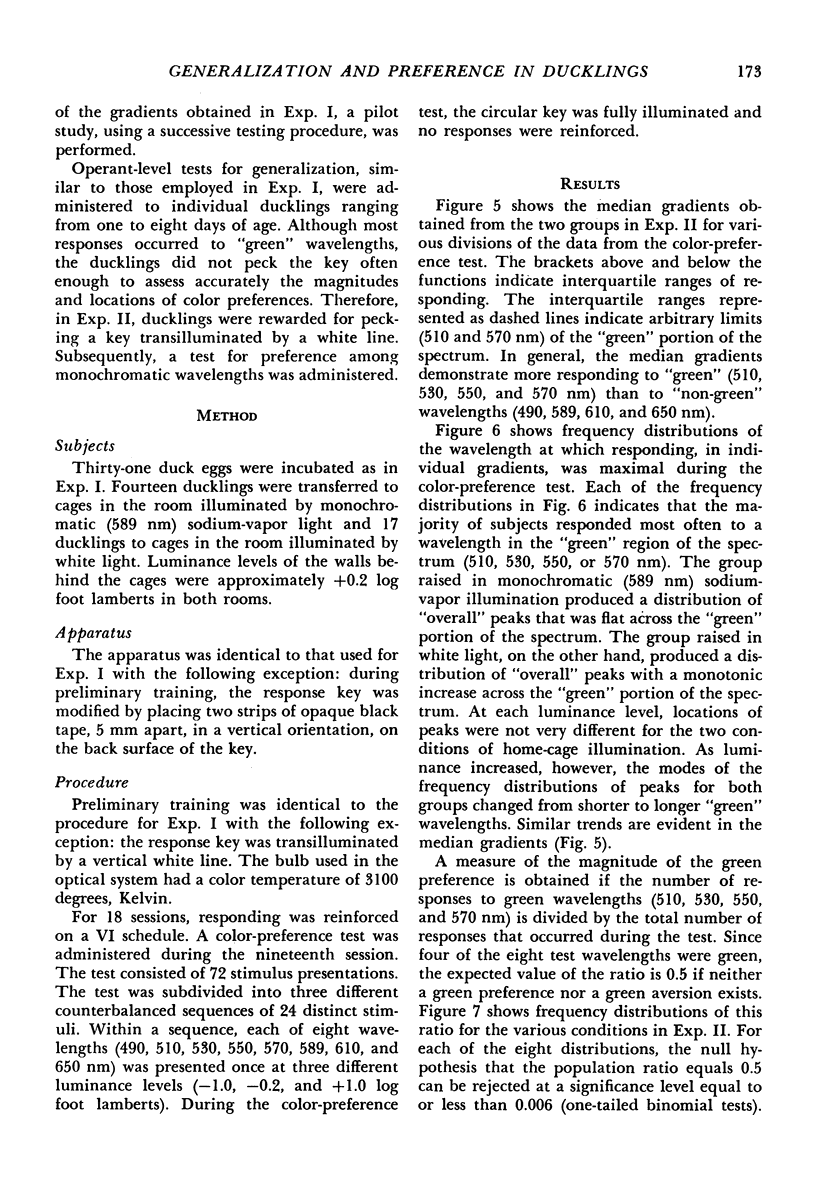
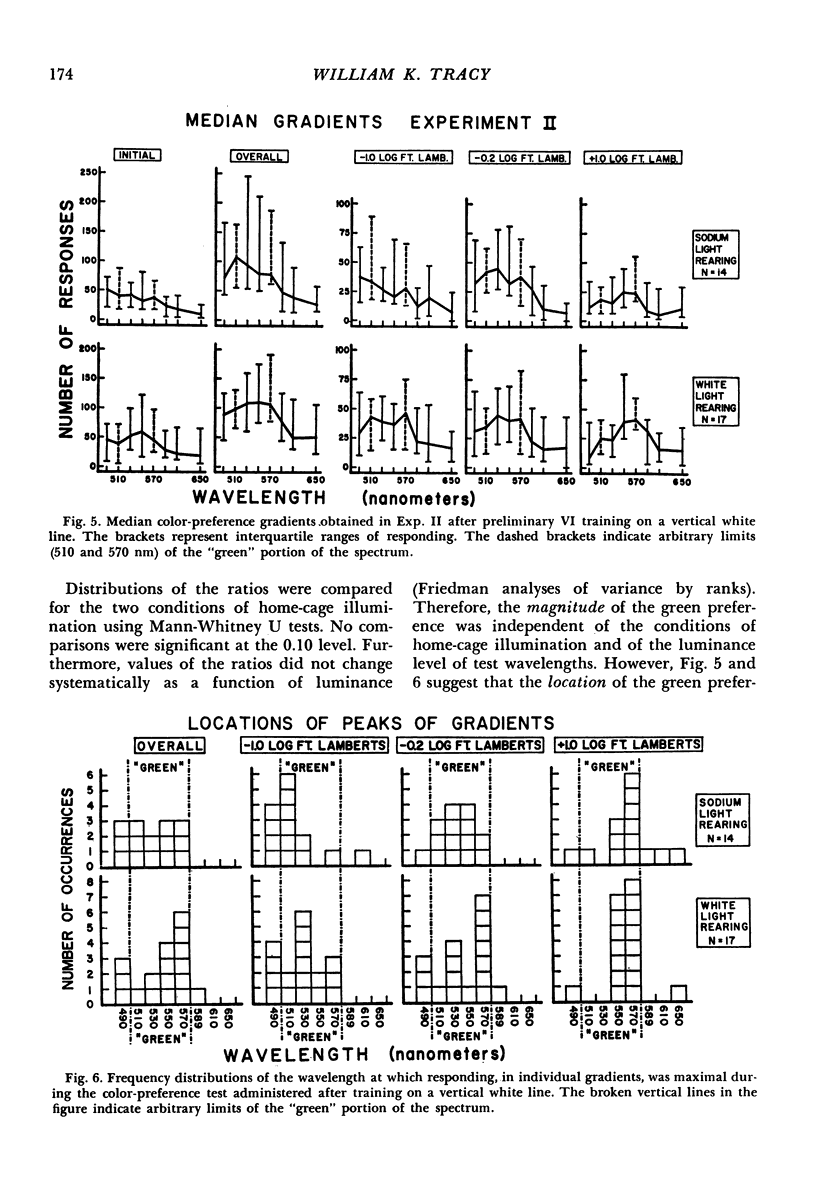
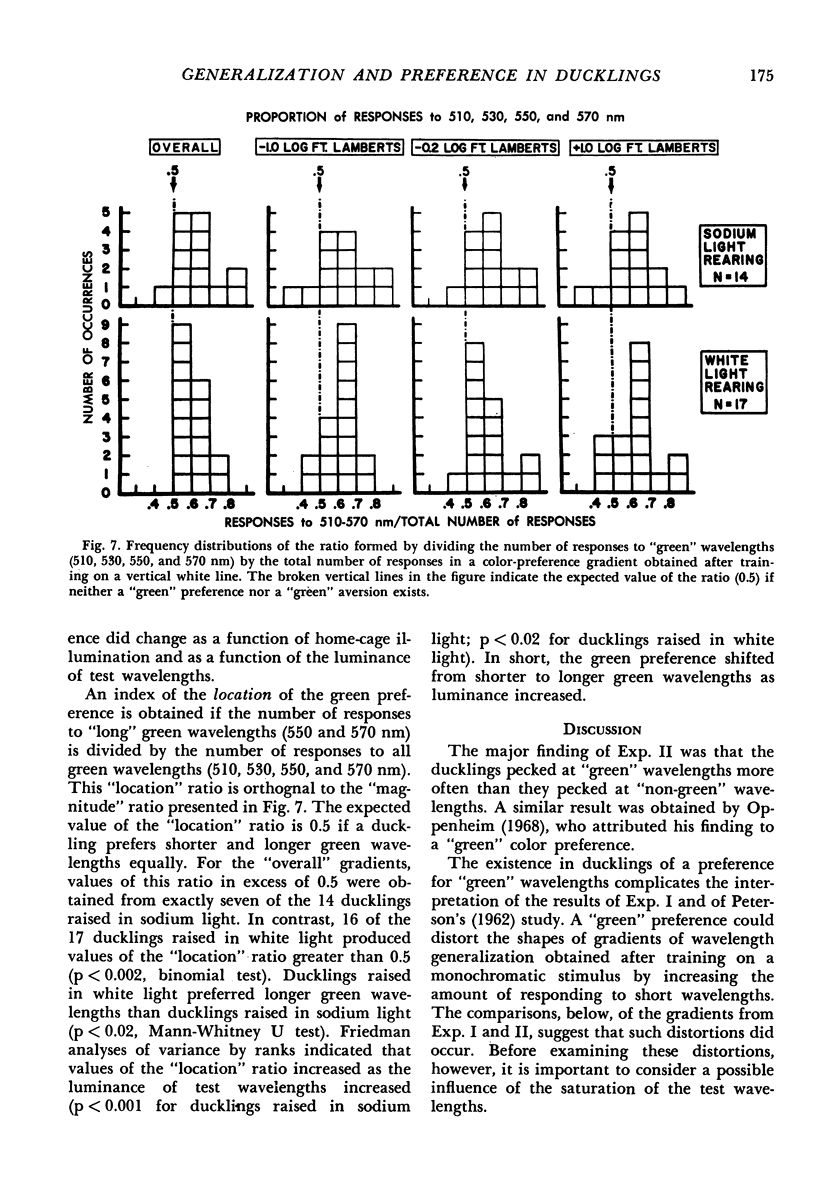
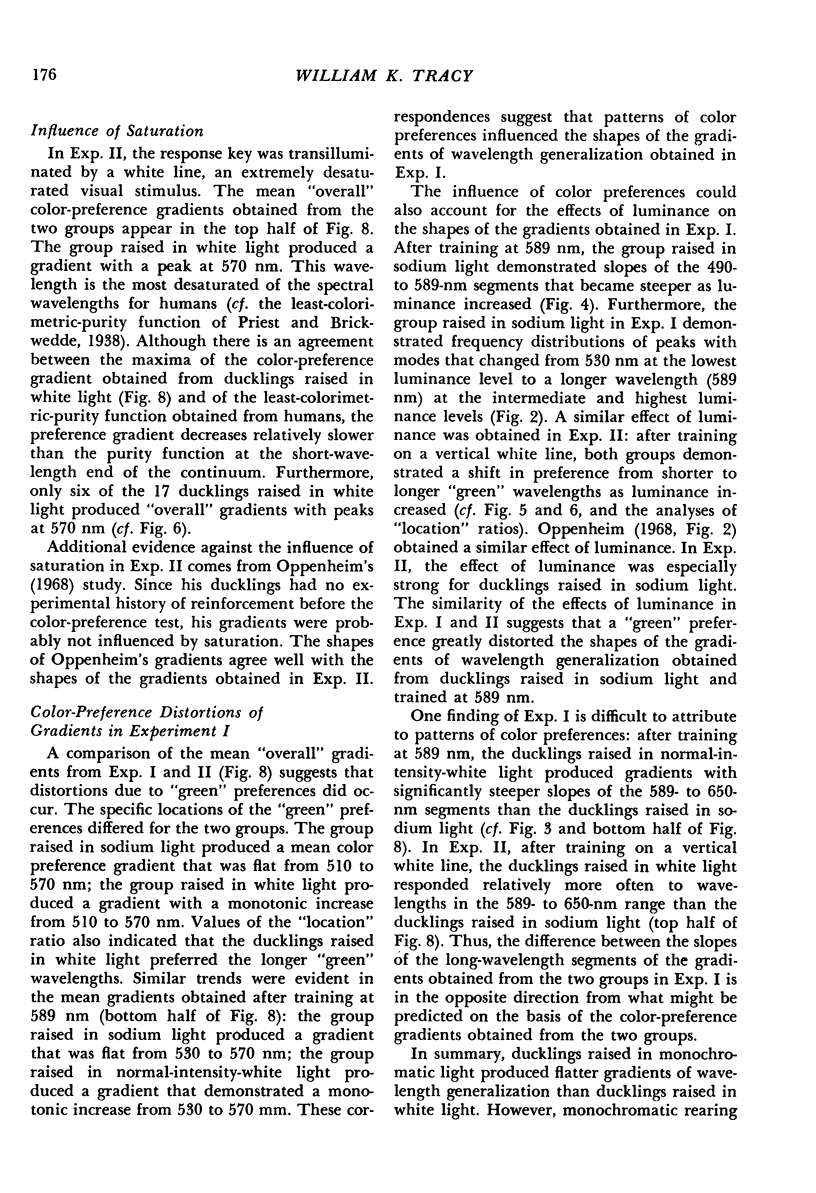
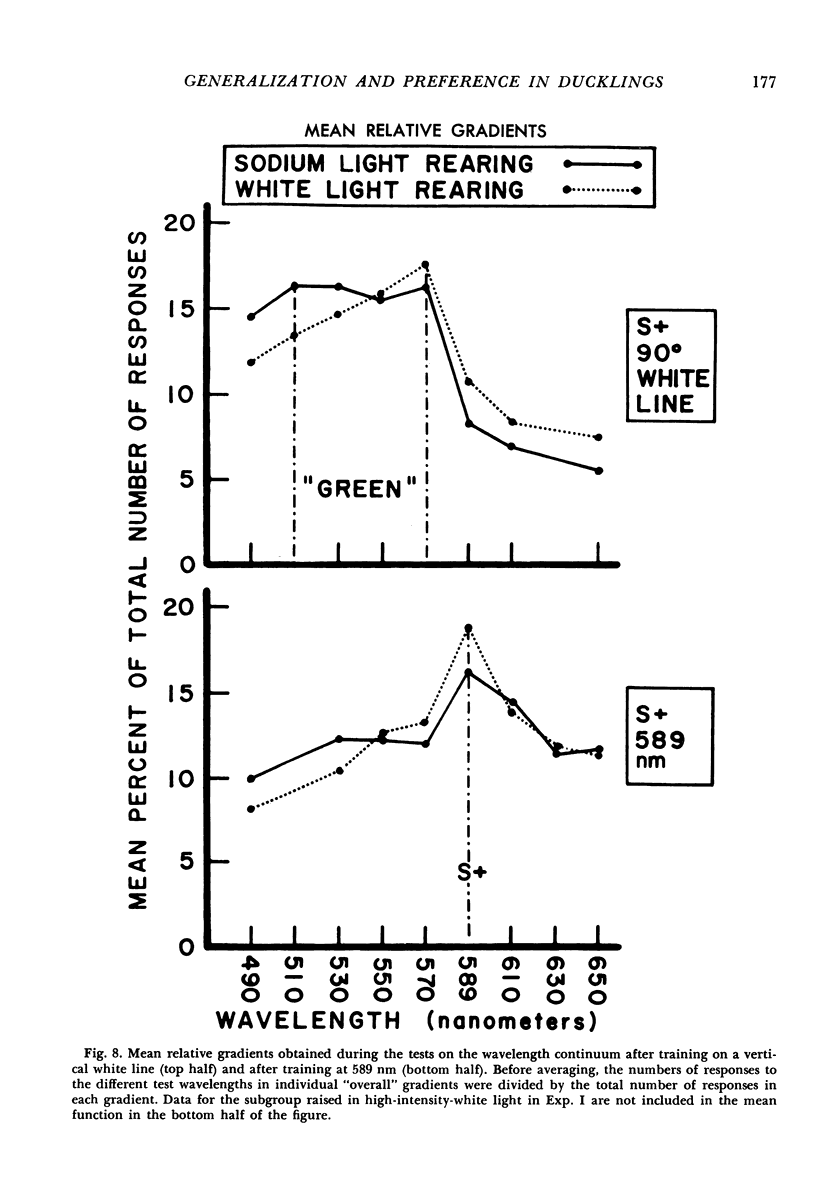
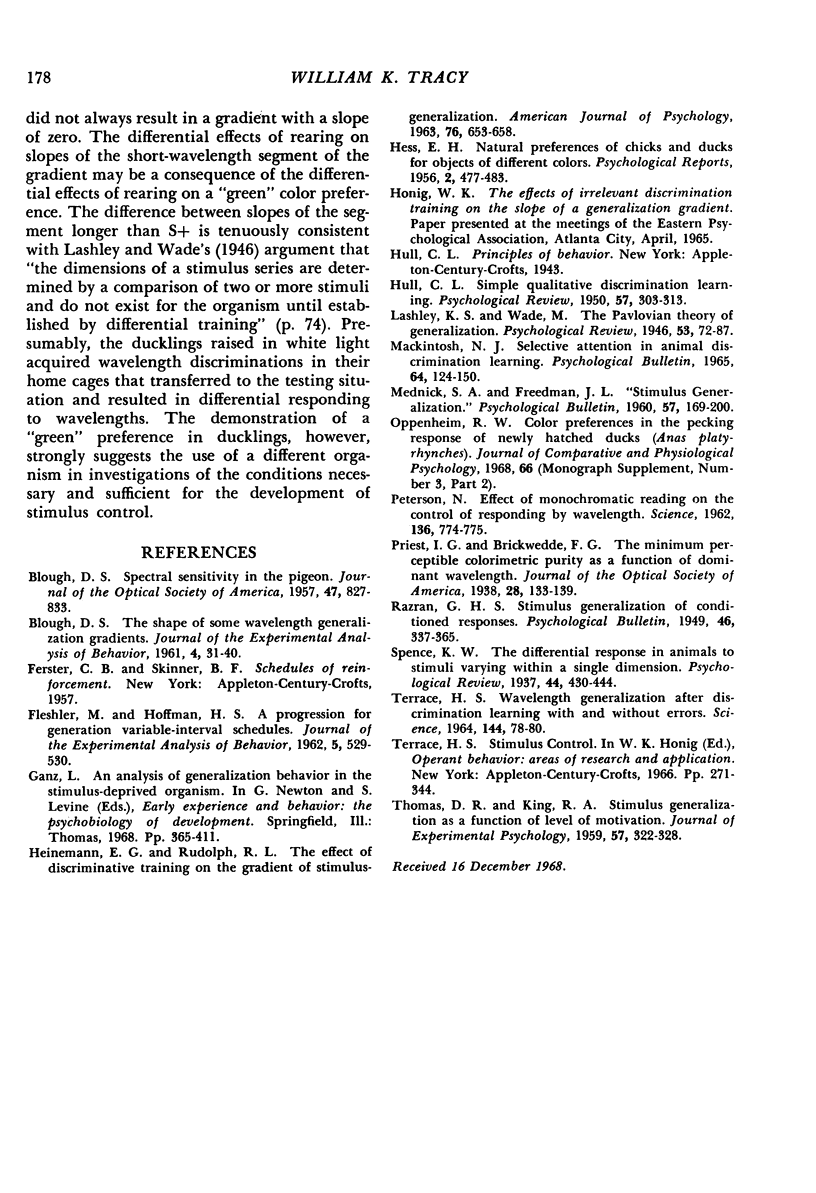
Selected References
These references are in PubMed. This may not be the complete list of references from this article.
- Andrews B. F., Wolfe W. M., Jr, Hoffman J. H., Thomas P. P. Significance of protein and bilirubin-protein ratio in amniotic fluid from Rh-isoimmunized mothers. A preliminary report. J Ky Med Assoc. 1968 Apr;66(4):363–365. [PubMed] [Google Scholar]
- BLOUGH D. S. Spectral sensitivity in the pigeon. J Opt Soc Am. 1957 Sep;47(9):827–833. doi: 10.1364/josa.47.000827. [DOI] [PubMed] [Google Scholar]
- Blough D. S. The shape of some wavelength generalization gradients. J Exp Anal Behav. 1961 Jan;4(1):31–40. doi: 10.1901/jeab.1961.4-31. [DOI] [PMC free article] [PubMed] [Google Scholar]
- FLESHLER M., HOFFMAN H. S. A progression for generating variable-interval schedules. J Exp Anal Behav. 1962 Oct;5:529–530. doi: 10.1901/jeab.1962.5-529. [DOI] [PMC free article] [PubMed] [Google Scholar]
- HEINEMANN E. G., RUDOLPH R. L. THE EFFECT OF DISCRIMINATIVE TRAINING ON THE GRADIENT OF STIMULUS-GENERALIZATION. Am J Psychol. 1963 Dec;76:653–658. [PubMed] [Google Scholar]
- HULL C. L. Simple qualitative discrimination learning. Psychol Rev. 1950 Sep;57(5):303–313. doi: 10.1037/h0062099. [DOI] [PubMed] [Google Scholar]
- MACKINTOSH N. J. SELECTIVE ATTENTION IN ANIMAL DISCRIMINATION LEARNING. Psychol Bull. 1965 Aug;64:124–150. doi: 10.1037/h0022347. [DOI] [PubMed] [Google Scholar]
- PETERSON N. Effect of monochromatic rearing on the control of responding by wavelength. Science. 1962 Jun 1;136(3518):774–775. doi: 10.1126/science.136.3518.774. [DOI] [PubMed] [Google Scholar]
- TERRACE H. S. WAVELENGTH GENERALIZATION AFTER DISCRIMINATION LEARNING WITH AND WITHOUT ERRORS. Science. 1964 Apr 3;144(3614):78–80. doi: 10.1126/science.144.3614.78. [DOI] [PubMed] [Google Scholar]
- THOMAS D. R., KING R. A. Stimulus generalization as a function of level of motivation. J Exp Psychol. 1959 May;57(5):323–328. doi: 10.1037/h0042183. [DOI] [PubMed] [Google Scholar]


